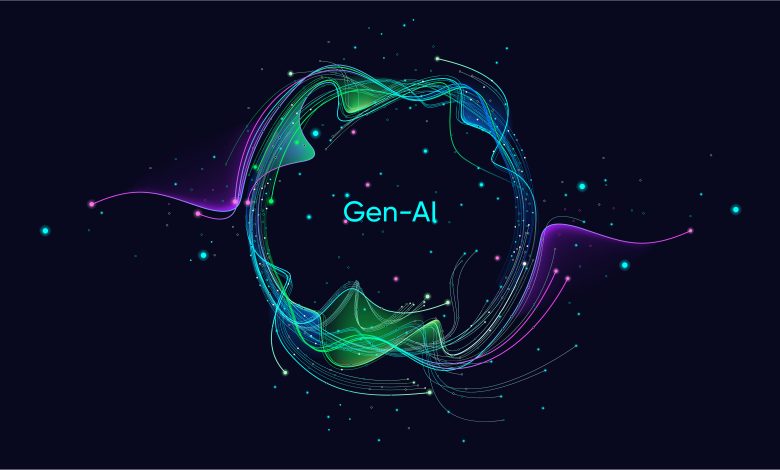
Introduction: AI at an Inflection Point
The insurance industry stands at a critical turning point. For years, carriers have invested in modernization—digitizing paper-based processes, automating workflows and migrating to the cloud. These efforts laid an important foundation, but they did not fundamentally change the way insurance operates. Generative AI; however, represents something different: a transformative shift that could reshape every corner of the industry.
According to recent research from Boston Consulting Group (BCG), insurers have been faster than most sectors to adopt AI. Yet, while 67% of insurers have experimented with AI, only about 7% have successfully scaled it across their organizations. That gap between pilots and enterprise-wide transformation is where the challenge lies for the decade ahead. The question is no longer whether AI will impact insurance, but which insurers will use it to lead.
The Promise of Generative AI for Insurance
Insurance is a uniquely fertile ground for generative AI. Carriers hold vast amounts of longitudinal data on customer behavior, risks and outcomes—data that is both structured and unstructured. Generative AI thrives on this complexity, turning documents, communications and raw information into usable intelligence.
The promise extends beyond incremental efficiency. Properly deployed, generative AI can help insurers rethink processes end-to-end, from underwriting and claims to customer service and product innovation. This isn’t about automating tasks at the margins; it’s about enabling a new operating model built for speed, personalization, and insight.
Use Case 1: Intelligent Underwriting
Underwriting remains one of the most labor-intensive functions in insurance. Submissions arrive as emails, PDFs, spreadsheets, and scanned documents, requiring underwriters to re-key data and stitch together incomplete information. The process slows down decision-making and limits capacity, especially in commercial and specialty lines.
Generative AI, paired with intelligent document processing, offers a breakthrough. Models can summarize long broker submissions, extract risk data, flag anomalies and even recommend pricing tiers based on historical patterns. This enables underwriters to triage submissions more efficiently and focus their expertise where it matters most: on high-value judgment and broker collaboration.
Still, caution is warranted. Black-box recommendations cannot be blindly accepted in a regulated industry. To succeed, carriers must implement transparent governance, human-in-the-loop reviews, and audit trails. Efficiency gains must be balanced with explainability, fairness and regulatory compliance.
Use Case 2: Generative Analytics Across the Enterprise
Insurers often describe themselves as data-rich but insight-poor. Accessing even basic metrics, such as quote-to-bind ratios or retention rates, can require technical teams to write SQL queries or build custom reports. And when data lives in silos, those reports often tell only part of the story.
Generative AI changes that dynamic. With natural language interfaces, business leaders can ask open-ended questions “Which distribution channels are growing fastest?” or “Where are we losing the most business?” and receive immediate answers with supporting visualizations. What once required weeks of analysis can now be delivered in seconds.
The implications are far-reaching. A COO can monitor premium growth by product line in real time. An underwriting leader can identify pricing gaps across regions. A product manager can assess customer lifetime value and adjust strategy accordingly. This is more than self-service BI; it is a new model of generative analytics that democratizes insight across the organization.
As with underwriting, challenges remain. Business users may distrust AI outputs, and IT teams may fear loss of control. But the bigger risk is not deploying these capabilities at all. Competitors that can act on data in real time will outpace those stuck in monthly reporting cycles.
Why Scaling Remains Hard
If the benefits are so clear, why have so few insurers scaled AI effectively? BCG’s research points to two categories of obstacles: technological and organizational. Roughly 30% of challenges stem from technology, while 70% come from people, processes, and culture.
On the technology side, legacy systems and fragmented data remain the biggest barriers. Many carriers still operate on decades-old platforms that were never designed for real-time AI integration. Data is scattered across policy, claims, billing, and CRM systems, making it difficult for models to see the full picture. Technical debt adds friction, slowing the rollout of enterprise-wide capabilities.
But the bigger challenge lies in the human factors. Insurance is built on precision and predictability, while AI is inherently probabilistic. That cultural tension creates resistance. In addition, AI efforts are often siloed within IT or innovation teams, with limited engagement from business leaders. Without clear ownership and alignment with strategic priorities, pilots often stall before reaching scale.
The Role of Modern Infrastructure
Scaling generative AI requires more than point solutions; it demands modern infrastructure. Cloud-native, API-first core systems make it possible to connect AI tools seamlessly and deliver real-time data across the enterprise. Instead of building custom integrations for every use case, insurers can create a data architecture that supports experimentation and scale.
Equally important is unified data. AI models are only as strong as the information they can access. A single, governed data estate—spanning policy, claims, billing and customer interactions—ensures that AI outputs are consistent, accurate, and auditable. Without this foundation, insurers risk amplifying the very silos they are trying to overcome.
The industry’s leaders first need to invest here. By modernizing their core systems, they create an environment where AI isn’t an add-on but an embedded capability. This shift positions them to move faster, launch new products more effectively, and scale AI use cases enterprise-wide.
Interoperability and the Next Phase of AI
Even with modern infrastructure, another challenge looms: interoperability. Today, many AI tools and agents are locked into proprietary ecosystems. Integrations must be rebuilt for each platform, creating vendor lock-in and slowing innovation.
This is where emerging standards such as the Model Context Protocol (MCP) become important. MCP establishes consistent, secure methods for AI systems to connect with external tools and data sources. In practice, it allows insurers to adopt the best AI solutions without rebuilding their integration layer each time.
Interoperability is more than a technical convenience. It is a safeguard against fragmentation, a way to ensure that AI investments remain portable and future-proof. For insurers, adopting open and interoperable AI architectures means they can evolve with the technology rather than being constrained by it.
The Road Ahead
Generative AI is not a passing trend. It will reshape how insurance is underwritten, analyzed, and delivered. But capturing its potential requires more than enthusiasm; it demands modern infrastructure, unified data, interoperable systems and cultural readiness.
The industry has reached an inflection point. Waiting on the sidelines may feel safer, but it is also riskier. Switching costs are low, productivity gains are visible, and competitors are already moving. The winners will be those who start now, experiment boldly and scale thoughtfully.
For insurers, the mandate is clear: embrace generative AI not as a tool for efficiency, but as a catalyst for transformation. The future of insurance is already here. The challenge—and the opportunity—is to build it.




